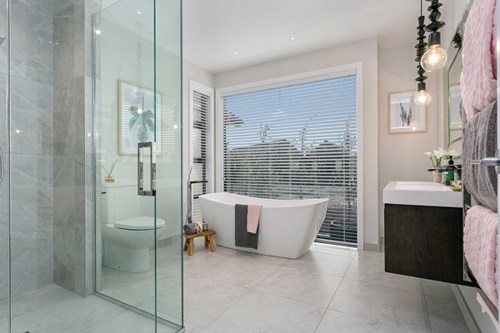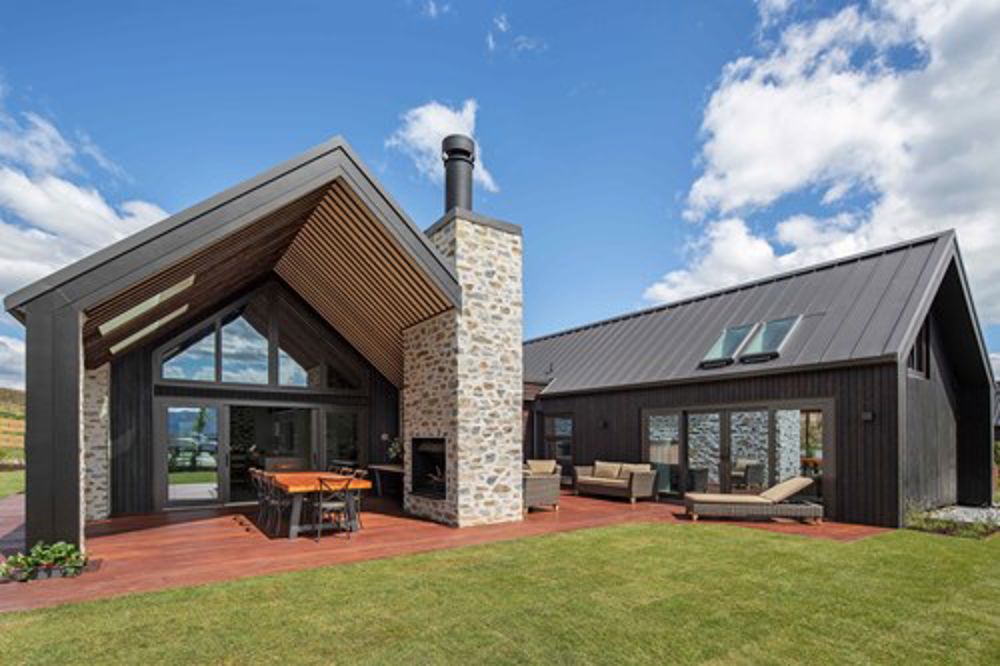-
This is the first blog in our 3 part series in which we will take you through the key considerations and our recommendations on how you can incorporate sustainability into your new build. In this blog, we’re going to go into detail on the 5 features in the planning stage of your journey to building a sustainable home.
1. Use Sustainable Materials:
When considering materials for your architecturally design custom build, some things to implement for a more sustainable home are:
- Sourcing products locally, or from sustainable producers. If products have to travel less distance, or the distance they do travel is responsibly offset, the contribution of Carbon Dioxide and other greenhouse gasses to the atmosphere is significantly reduced.
- Choose recyclable materials. Using products that can be recycled at the end of their useful life cycle for your build means less contribution to landfill.
- Choose materials that are low in volatile organic compounds (VOC). Products high in VOC’s contribute more pollutants to the ozone layer which in turn is harmful for not only humans but plants and animals when emitted back into our atmosphere.

2. Reduce Reliance:
Implement more efficient ways to source energy for your home, to reduce reliance on externally provided energy. The most common forms of these sources are Solar (for water heating or generating electricity) and Geo-Thermal (in specific locations). Including these systems in your build does require an initial investment, but the return on investment is great for reducing power costs and helping the environment.
3. Think about Water Usage/Re-usage:
Another factor to consider is the amount of water usage required once you’re living in your new architecturally designed custom home.The options to do this can vary based on your location and local council regulations. One way you can implement sustainable water usage is selection of WEL’s rated tap-ware and water appliances.
To increase your ability to reuse water, consider using a Retention system
- Retention systems include a tank or tanks that retain stormwater onsite, and such can be reused for other purposes such as irrigation, car washing and even toilet flushing.
Detention systems to reduce the load on local council stormwater systems and prevent flooding and coastal erosion, therefore protecting waterways.
- Detention systems include an underground tank that collects and holds stormwater and then discharges it into the councils system at a prescribed rate.

4. Design for Living:
When planning your new custom designed build, take into consideration appropriately sized spaces for your lifestyle and individual needs. Additionally, consider a designated service area for recycling bins to reduce the contribution of rubbish to the environment, and fitting a covered washing line so you need to use the dryer less often.
Another way to implement sustainability in your build is positioning the orientation of your home on the site for maximum ability to capture sunlight for warmth and light to reduce your reliability on external sources (heaters, fires and lights for example).
Ways you can do this include:
- Reducing the number and size of any South-facing glazing, and increasing the number and size of North-facing glazing.
- Including and thoughtfully placing materials that provide thermal mass such as block-work and concrete
5. Energy Efficient Appliances
When buying appliances for your new home, consider the energy efficiency of them. There are a multitude of products available on the market that are energy efficient and not only save you money on power but also draw less energy from the infrastructure.
The Energy Rating system is a collaboration between the New Zealand and Australian governments to help people reduce their energy use and carbon emissions, by including a star rating out of 5 for how efficient the appliance is. Avoid appliances with an ‘always on’ feature and instead have a ‘stand-by’ mode.

As you can see, there are a plethora of factors and decisions to consider that affect the sustainability of your new custom designed build. Your local David Reid Homes franchise has a team who can guide and assist you through this process to ensure that you’re completely satisfied with the end product.
Check out our highly commended eco-efficient Hanley's Farm, Queenstown Show Home
5 Considerations for Your Next Custom Build for Better Sustainability

Filed under:
- Build Advice
- Design and Advice
- Inspiration